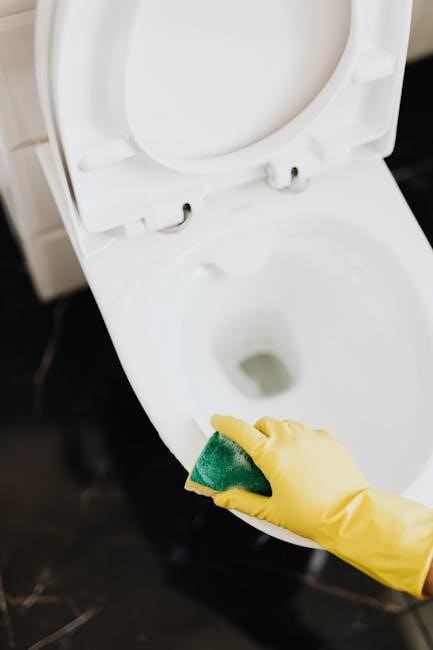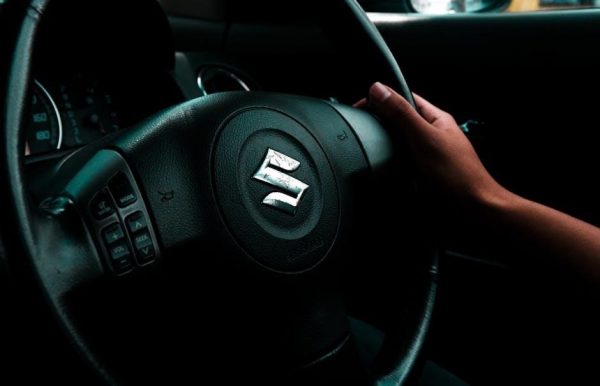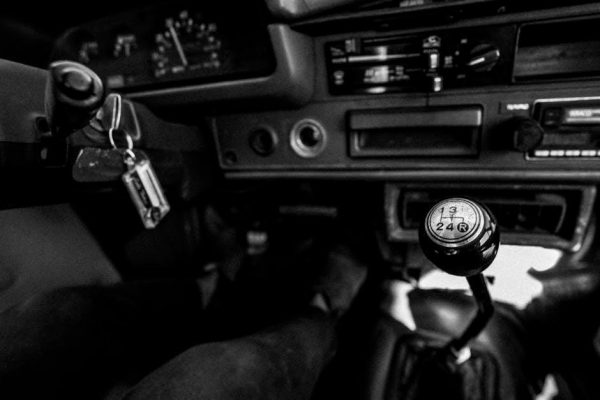The E46 manual swap is a popular modification for BMW enthusiasts, offering enhanced control and driving experience by converting from automatic to manual transmission.
Overview of the E46 Manual Transmission Swap
The E46 manual transmission swap involves converting a BMW E46 from automatic to manual, enhancing driver control and engagement. This complex process requires mechanical expertise, specialized tools, and precise planning. It involves removing automatic components, installing a compatible manual transmission, and adapting electrical systems. The swap offers improved performance and driving satisfaction but demands careful execution to avoid issues like SES lights or gear engagement problems.
Benefits of Converting from Automatic to Manual
Converting the E46 from automatic to manual offers several key benefits. It enhances driving engagement, providing better control and a more immersive experience. Additionally, a manual transmission often results in lower maintenance costs and improved fuel efficiency. The ability to customize gear ratios for specific driving styles further enhances performance and acceleration. This swap is especially rewarding for enthusiasts seeking a more connected and satisfying drive.
Assessing the Project
Evaluating mechanical skills, researching model-specific requirements, and budgeting for parts and tools are critical steps to ensure a smooth E46 manual swap conversion process.
Evaluating Mechanical Skills and Resources
Evaluating your mechanical skills and resources is essential before starting the E46 manual swap. This project requires significant mechanical aptitude, specialized tools, and a suitable workspace. Assess your experience with transmissions and clutch systems, as improper installation can lead to costly repairs. If you lack expertise, consider seeking professional assistance. Ensure you have access to a lift or jack, wrenches, and diagnostic tools. Budget for unexpected expenses and consult online forums for insights from experienced enthusiasts to avoid common pitfalls and ensure a smooth conversion process.
Researching Model-Specific Requirements
Researching model-specific requirements is crucial for a successful E46 manual swap; Each model year and engine type has unique specifications, so verify compatibility of the transmission, clutch, and flywheel with your vehicle. Consult BMW part diagrams, forums, and repair manuals to ensure accuracy; This step prevents installation issues and ensures all components function seamlessly together, avoiding costly incompatibilities down the line.
Choosing the Right Transmission
Selecting the right transmission for your E46 manual swap involves considering compatibility, performance needs, and condition. Popular options include Getrag transmissions, known for reliability and durability, with varying gear ratios to suit driving preferences. Ensure the transmission is in good condition and compatible with your vehicle’s engine and model year for optimal performance and reliability.
Compatibility with E46 Model and Engine
Ensuring transmission compatibility with your E46’s specific model and engine is crucial for a smooth swap. Research your vehicle’s engine code and year to identify suitable transmissions, as compatibility varies. For example, the Getrag 420G is often recommended for six-cylinder engines, while other models may require different units. Always consult BMW part diagrams or forums to confirm compatibility before purchasing or installing.
Popular Transmission Options and Gear Ratios
Popular transmission options for the E46 include the Getrag 420G and T-5, known for their durability and compatibility with various E46 models. Gear ratios vary, with shorter ratios enhancing acceleration for performance driving, while longer ratios improve fuel efficiency for daily use. Choosing the right ratio depends on your driving style and vehicle setup, ensuring optimal performance and drivability.

Gathering Necessary Parts
Gathering the right parts is essential for a smooth E46 manual swap. This includes a compatible transmission, clutch kit, flywheel, and hydraulic components, ensuring proper fitment and functionality.
Clutch Kit, Flywheel, and Hydraulic Components
The clutch kit is a cornerstone of the E46 manual swap, typically including a clutch disc, pressure plate, and throw-out bearing. A new flywheel is highly recommended to ensure balance and prevent vibration. Hydraulic components like the master and slave cylinders are essential for smooth clutch operation. Proper installation and alignment of these parts are critical to avoid issues like slippage or failure. Bleeding the hydraulic system is necessary to eliminate air bubbles, ensuring a firm pedal feel and reliable engagement;
Wiring Harness and Pedal Assembly
A suitable wiring harness is essential for integrating the manual transmission with the E46’s electrical systems. Acquiring a donor harness or modifying the existing one ensures compatibility. The pedal assembly must be replaced with a manual-specific unit, including the clutch pedal, master cylinder, and linkage. Proper installation and alignment are critical to ensure smooth clutch operation and avoid mechanical issues down the line.

Mechanical Swap Process
The process involves removing the automatic transmission and installing a manual unit, requiring precise alignment and reconnection of driveshafts and linkages for proper function.
Removal of Automatic Transmission Components
The first step in the E46 manual swap involves carefully removing the automatic transmission components. This includes disconnecting driveshafts, transmission mounts, and electrical connectors. Proper support and alignment are crucial to avoid damage during removal. Once the automatic transmission is extracted, inspect the bellhousing for any wear or debris. This step sets the stage for installing the manual transmission and ensures a clean start for the conversion process.
Installation of Manual Transmission and Clutch
Install the manual transmission by aligning it with the engine’s input shaft using an alignment tool. Secure it with the correct torque specifications to avoid damage. Next, install the clutch assembly onto the flywheel, ensuring proper alignment with the clutch disc. Reconnect the driveshafts and transmission mounts, then check all connections for leaks or misalignment. This step is critical for ensuring smooth operation and reliability of the manual transmission system.

Modifying the Pedal Box and Linkage

Modifying the pedal box and linkage is essential for manual transmission functionality. Replace the automatic pedal box with a manual one, ensuring proper clutch pedal alignment and operation.
Replacing the Pedal Assembly
Replacing the pedal assembly is crucial for manual transmission functionality. Swap the automatic pedal box with a manual unit, including the clutch pedal. Ensure precise installation and alignment for proper engagement. This step requires careful fabrication or modification to fit your E46’s specific configuration. Proper pedal placement ensures smooth shifting and optimal driver control.
Adjusting the Clutch Pedal and Linkage
Proper adjustment of the clutch pedal and linkage is essential for smooth operation. Fine-tune the pedal’s free play and ensure the linkage aligns correctly with the transmission. Use an Allen wrench to adjust the linkage rod, ensuring minimal free play for precise engagement. Lubricate moving parts and test the clutch operation to confirm smooth, consistent performance.

Wiring and Electrical Modifications
Wiring modifications are essential for the manual swap, including adapting the harness and connecting the clutch hydraulic system. A donor harness can simplify this complex process.
Adapting the Wiring Harness
Adapting the wiring harness is crucial for manual swap success. Use a donor harness from a manual E46 to avoid complications. Ensure compatibility with your engine and transmission. Modify connectors for clutch and gear sensors. Consult detailed guides or professionals for accurate wiring. Proper adaptation prevents issues like error lights or system malfunctions. A well-adapted harness ensures seamless communication between components, essential for smooth operation post-swap.
Connecting and Bleeding the Clutch Hydraulic System
Connecting and bleeding the clutch hydraulic system ensures proper fluid flow and pressure. Install the master and slave cylinders, then connect the hydraulic lines securely. Bleed the system to remove air bubbles, which can cause a spongy pedal or clutch failure. Use the correct fluid and follow a systematic bleeding process. Test the pedal feel and clutch engagement to confirm proper function. This step is vital for reliable operation post-swap.
Coding the DME for Manual Transmission
Coding the DME is essential for manual transmission recognition. Use NCS Expert to program the ECU, ensuring proper function and eliminating error lights after the swap.
Understanding ZCS Coding for AT-MT Swap
ZCS coding is crucial for E46 AT-MT swaps. It involves reprogramming the DME to recognize the manual transmission, eliminating SES lights and gear indicators. This process ensures proper engine communication with the new transmission, preventing errors and optimizing performance. Precise coding steps are necessary to maintain functionality and reliability after the swap.
Using NCS Expert for ECU Programming
NCS Expert is essential for ECU programming in the E46 manual swap. It allows you to adapt the vehicle’s software to recognize the manual transmission. Connect the tool to the OBD port, load the specific ZCS codes, and program the ECU. This ensures proper communication between the engine and transmission, eliminating errors and enabling features like clutch control and gear recognition. Proper coding is vital for a seamless swap.

Common Pitfalls and Troubleshooting
Common issues include SES lights, gear indicator malfunctions, and hydraulic system leaks. Proper coding and thorough inspection of components can prevent these problems during the swap.
Avoiding SES and Gear Indicator Issues
Avoiding SES and gear indicator issues requires proper DME coding after the swap. The car’s computer must recognize the manual transmission to prevent warning lights; Use NCS Expert for coding, ensuring ZCS parameters are correctly set. Ignoring this step can lead to persistent SES lights and incorrect gear displays, affecting the driving experience and potentially triggering other system errors over time.
Resolving Clutch Engagement and Hydraulic Problems
Clutch engagement and hydraulic issues often arise after a manual swap. Symptoms include a spongy pedal or poor engagement. Bleed the hydraulic system thoroughly to remove air bubbles. Inspect the clutch master and slave cylinders for leaks or damage. Replace worn or faulty components immediately. Ensure proper reassembly and adjustment of the clutch linkage or cable. If issues persist, consult a qualified mechanic to diagnose and resolve the problem effectively.

Community Resources and Support
Online forums, DIY guides, and enthusiast communities provide invaluable support for E46 manual swaps, offering practical advice, part sourcing, and troubleshooting tips to ensure success.
Online Forums and DIY Guides
Online forums like BMW enthusiast communities and specialized E46 forums offer extensive guides, part lists, and step-by-step instructions for manual swaps. Members share personal experiences, troubleshooting tips, and solutions to common issues, making these platforms invaluable for DIY enthusiasts. Additionally, detailed DIY guides provide comprehensive overviews, ensuring enthusiasts are well-prepared for every stage of the conversion process.

Seeking Professional Assistance
For those lacking experience or confidence, professional assistance is highly recommended. Reputable BMW specialists or transmission shops can handle complex tasks like wiring modifications, DME coding, and precise mechanical adjustments; Their expertise ensures a flawless conversion, saving time and preventing costly mistakes. Additionally, professionals can source rare or model-specific parts, streamlining the process and guaranteeing reliability.
Completing an E46 manual swap is a rewarding project that enhances driving engagement and satisfaction. With careful planning and execution, enthusiasts can enjoy improved performance and control.
Final Tips for a Successful E46 Manual Swap
- Thoroughly test the transmission and clutch system post-installation to ensure smooth operation.
- Double-check all electrical connections and coding to avoid SES or gear indicator issues.
- Inspect hydraulic systems for leaks and proper function before driving.
- Consult online forums or seek professional help if encountering complex problems.
- Be patient and persistent; small adjustments can make a significant difference.
- Enjoy the enhanced driving experience and pride in your accomplishment!
Enjoying the Rewards of Your Manual Transmission
After completing the E46 manual swap, you’ll experience improved driving engagement and control. The manual transmission enhances acceleration, fuel efficiency, and overall performance. It allows for a more connected driving experience, making every journey more enjoyable. Take pride in your accomplishment and relish the satisfaction of a successful DIY project, tailored to your driving preferences and style.




